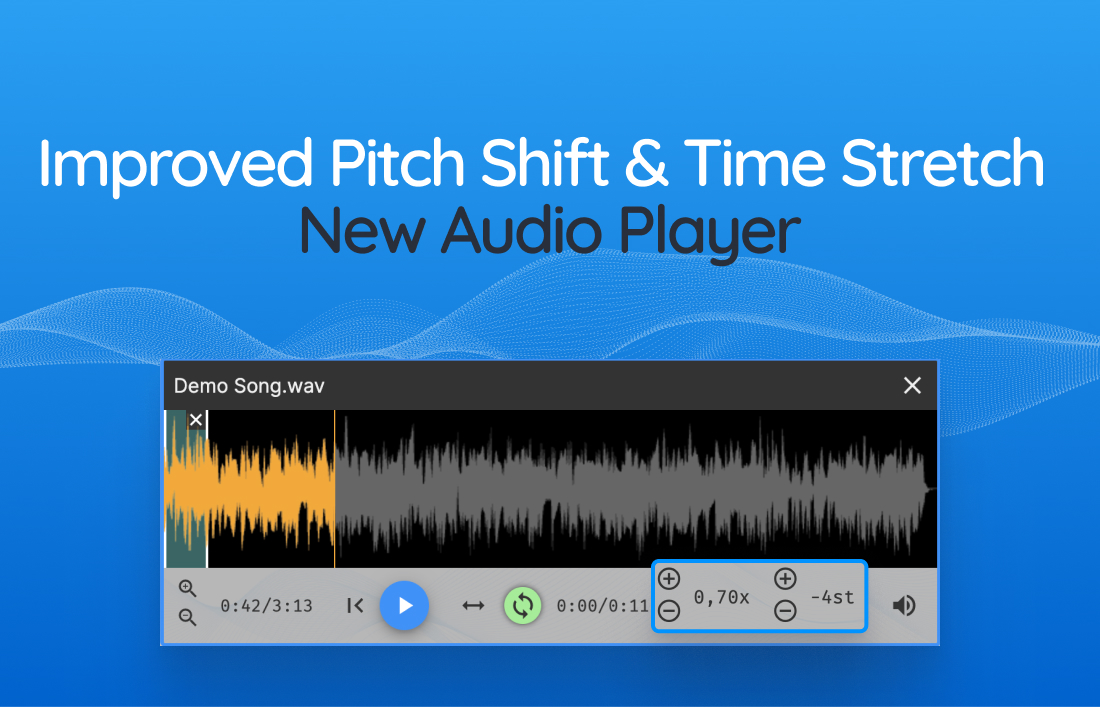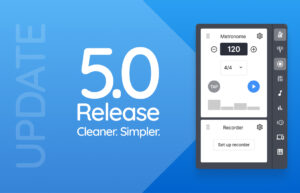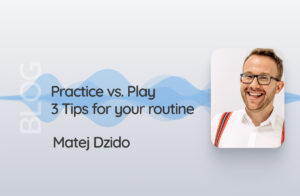The doozzoo audio player has undergone a significant update, making it even more powerful and allowing for the manipulation of audio files in tons of new ways. Perfect for those who use playbacks in music lessons or for analyzing songs with students. Time-stretching and pitch-shifting are now a breeze with the improved doozzoo audio player, letting you experience quality sound from any device in the world – without having to install anything.

Slow Down!
Manipulating analog audio used to be difficult due to changes in both speed and pitch when slowing down or speeding up a piece. But now, digital methods have made it easier than ever before to keep the pitch while changing the tempo, and vice versa.
Slowing down musical pieces is incredibly beneficial for music education, as it allows students to sharpen their listening skills and better understand complex passages. That’s why doozzoo’s audio player comes with time-stretching and pitch-shifting capabilities, enabling users to make the most of their recordings across genres and instruments.
Analog vs. digital
In the analog world of audio, changing a track’s speed was impossible without altering its pitch. On vinyl records, changing the turntable’s speed would result in both faster or slower songs and different pitches. However, digital audio offers something entirely different – thanks to advanced calculations, it’s now possible to keep the pitch constant when changing song speeds. Alternatively, users can adjust the pitch without altering the speed of their tracks.
Digital Timestretch
If you imagine digital audio as a picture printed on paper that you want to make wider, it’s similar to cutting the image into strips and stretching them out to reach the desired width. Modern algorithms can fill in any gaps created by stretching the strips.
This same idea applies when adjusting audio files with time-stretching and pitch-shifting, where more gaps must be calculated to play music slower. As a result, errors may occur during calculation and be audible as crackles –though this is less likely when speeding up music since no data needs to be created (no gaps), instead some data must be discarded. (In case you are curious: the calculations behind this process are called Fast Fourier Transformations or FFTs.)
Quality differences due to underlying algorithms
Nowadays, it’s rare to find an audio player with no time-stretching capability – from the iTunes Player and VLC Player to Audacity and even the operating system’s players, almost all of them can adjust the speed. However, YouTube has gone one step further and allows users to change the playback speed of their videos.
The editing quality achievable here varies greatly depending on the underlying technology used. Generally speaking, the better the technology employed, the less noticeably any sound quality will suffer from extreme changes in speed or pitch. Most audio players can edit audio by up to 15% without compromising quality.
Improved technology in doozzoo’s audio player
We’ve received plenty of feedback from our doozzoo users, many of whom regularly use the audio player – Ric Engelhard, for instance, told us in an interview that he utilizes it in digital-based music lessons. Other teachers use the slow downer and pitch-shift functions online and daily in their classrooms. Because of this, we felt it necessary to take another look at the technology used for our audio player and are thrilled with the results!
The new audio player on doozzoo now allows for even further manipulation of audio files without compromising sound quality – you can decrease tempo by up to 40% and more with next to no audible artifacts.
How your music lessons benefit
Music teachers know the importance of playing and singing along with original tracks or play-alongs – it motivates students, giving them the feeling they are playing in a band. In addition, play-alongs help them learn that they need to practice their parts more precisely if they get lost during a song. They also teach students to listen carefully so that they can easily find their way back into the piece if they do get off track. By learning this valuable skill, teachers can help prevent awkward or discouraging situations when performing with other musicians.
Practicing at home
With the doozzoo audio player, your students can access and modify the audio files you have stored even after class. In addition, by both of you using the same application, it’s much easier for them to understand the pitch and tempo settings – a process made more straightforward by demonstrating in class. And with your permission, they can also access these music files from home.
Read more about how to use play-alongs in music lessons in José Cortijo’s Blogpost: How play-alongs spice up your music lessons.











